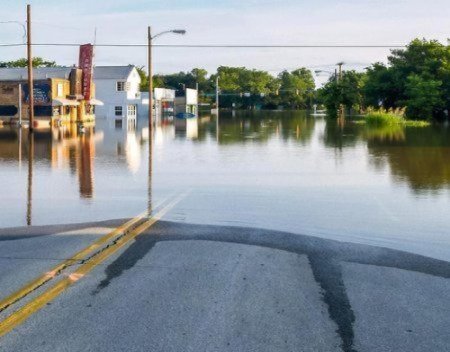
Simple Flood Insurance Tips You Should Know
Property flood insurance is designed to protect property owners from financial losses due to flooding.
Here are the basics you need to know:
1. What It Covers Flood insurance policies generally cover: Building Property Coverage: This includes the structure of your home or building, including: Foundation, walls, and roof Electrical and plumbing systems Central air conditioning, furnaces, and water heaters Built-in appliances like refrigerators, stoves, and dishwashers Permanently installed carpeting over an unfinished floor Personal Property Coverage: This covers the contents inside your home or building, such as: Furniture, clothing, and electronics Portable appliances and carpets not included under building coverage Washer and dryer Freezer and the food inside it Certain valuable items (limited coverage)
2. Exclusions Flood insurance typically does not cover: Damage from moisture, mildew, or mold that could have been avoided Damage to currency, precious metals, and valuable papers Property and belongings outside the insured building (e.g., trees, plants, wells, septic systems) Living expenses like temporary housing or lost rental income Vehicles and their parts
3. How It Works Purchasing the Policy: You can buy flood insurance through the National Flood Insurance Program (NFIP) or private insurers.
You don’t have to live in a high-risk area to purchase flood insurance.
Waiting Period: There is usually a 30-day waiting period from the date of purchase before the policy becomes effective, unless it is required by a lender for a loan.
Premiums: Premium costs depend on factors like the property's location, age, design, elevation, and the amount of coverage chosen.
Properties in high-risk areas typically have higher premiums.
4. Flood Zones and Risk Flood insurance premiums and requirements are influenced by flood zone designations: High-Risk Zones: Areas with a 1% annual chance of flooding (100-year floodplain) where flood insurance is often required for federally backed mortgages.
Moderate-to-Low-Risk Zones: Areas outside the high-risk zones where flood insurance is optional but recommended.
Undetermined Risk Zones: Areas where flood hazards are undetermined, but flood insurance can still be purchased.
5. Claims Process Report the Flood: Contact your insurance agent or company to report the flood damage as soon as possible.
Document the Damage: Take photographs and make a detailed list of all damaged or lost items.
Inspection: An insurance adjuster will inspect the property to assess the extent of the damage.
Receive Payment: After the inspection and processing, you will receive payment according to the terms of your policy to repair or replace the damaged property.
6. Community Involvement For a property to be eligible for NFIP insurance, it must be located in a community that participates in the NFIP and enforces floodplain management regulations aimed at reducing future flood risks.
Understanding these basics can help you make informed decisions about purchasing and maintaining flood insurance to protect your property against potential flood damage.
I have no problem giving you an A1 reference for taking care of the flood policies for me and Diane. I appreciate you working with the mortgage company: the surveyor and our previous agent. The result was a 75% reduction in our flood insurance premiums!
We contacted Mr. Holt for an estimate via email over the weekend prior to a closing on a property, hoping for a response on the following Monday to take with us with confidence in being insured at the settlement table on a Tuesday. He exceeded our expectations not once but in readily responding to the initial request and then to follow-up questions all during the weekend frenzy that occurs before closing. "Impressive and responsive customer service," for sure!
I have known Tim for many years and he is a man with great integrity, work ethic and one of the nicest persons I know. Over the years Tim has provided insurance counseling and advice to our company, for myself personally, as well as to our clients. Recently Tim, took time to analyze our flood insurance policy and he was able to make some excellent recommendations. Our flood insurance costs are now less and we have much better coverage. I recommend Tim to anyone without hesitation or reservation.